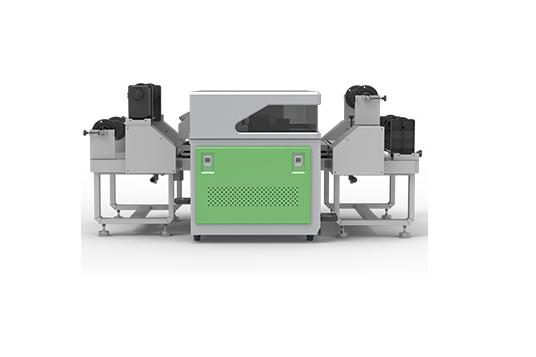Maintaining a UV printer is essential to ensure optimal performance and longevity. Like any other equipment, UV printers can encounter issues over time. Here are some common issues that may arise and troubleshooting techniques to address them:

1. Printhead Clogging:
Issue: Printhead clogging can occur due to dried ink or debris buildup, resulting in poor print quality or incomplete prints.
Troubleshooting:
- Perform regular printhead cleaning according to the manufacturer's guidelines.
- Use the recommended cleaning solution or solvent to dissolve any dried ink or debris.
- Check the ink levels regularly and ensure they are not running low, as low ink levels can contribute to clogging.
- If the printhead clogging persists, consult the printer's user manual or contact technical support for further assistance.
2. Banding or Streaking:
Issue: Banding or streaking refers to visible lines or streaks in the printed output, affecting print quality.
Troubleshooting:
- Check the printhead alignment and adjust if necessary to ensure proper ink deposition.
- Clean the printhead to remove any accumulated ink or debris that may cause uneven ink distribution.
- Check the media alignment and make sure it is properly loaded and tensioned.
- Calibrate the printer to ensure consistent ink flow and density across the print area.
- If banding or streaking continues, contact technical support for advanced troubleshooting or printhead replacement if required.
3. Ink Adhesion Issues:
Issue: Poor ink adhesion can result in prints that easily scratch or rub off the substrate.
Troubleshooting:
- Ensure the substrate is properly prepared and free from dust, grease, or other contaminants before printing.
- Adjust the UV curing settings to optimize ink adhesion without overcuring.
- Verify that the ink used is compatible with the substrate material and follow the manufacturer's recommendations.
- Experiment with different print settings, such as ink density or curing time, to achieve better adhesion.
- Consider using adhesion promoters or pre-treatments for challenging or non-traditional substrates.
4. Color Inconsistencies:
Issue: Color inconsistencies can occur when the printed output does not match the intended color or there are variations across the print.
Troubleshooting:
- Calibrate the printer using a color management system or software to ensure accurate color reproduction.
- Use color profiles specific to the ink and media combination to achieve consistent and desired color output.
- Check the ink levels and replace any low or expired ink cartridges that may affect color accuracy.
- Ensure proper maintenance of the UV lamp or LED system, as inadequate curing can impact color vibrancy.
- If color inconsistencies persist, consult the printer's user manual or contact technical support for further guidance.
5. Mechanical Issues:
Issue: Mechanical issues, such as paper jams, misalignments, or abnormal noises, can disrupt printing operations.
Troubleshooting:
- Follow the printer's user manual for proper maintenance and cleaning procedures to prevent mechanical issues.
- Check for any obstructions or foreign objects that may be causing jams or misalignments.
- Inspect and clean the printer's rollers, belts, and other moving parts regularly to ensure smooth operation.
- Lubricate the necessary components as per the manufacturer's recommendations.
- If the issue persists or if there are any hardware malfunctions, contact technical support for professional assistance.
Regular maintenance, adhering to manufacturer guidelines, and seeking professional assistance when needed are crucial for resolving issues and keeping a UV printer in optimal condition. Following proper maintenance practices can minimize downtime, ensure consistent print quality, and extend the lifespan of the printer.
kenteer has launched UV printers for customers. If you have any needs, you can contact us for a quote.
